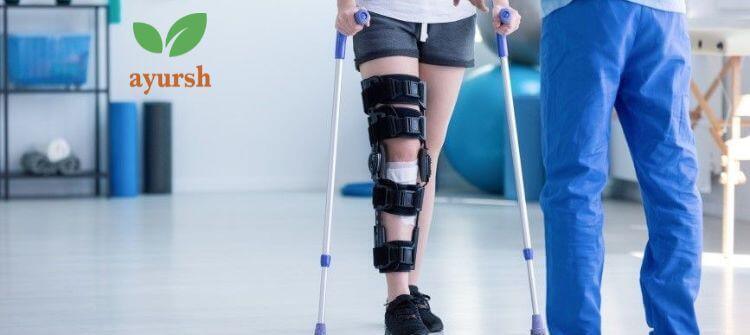Post-surgical operative rehabilitation is necessary after a major operation that hinders the function of the body.
The most common surgeries for which you can expect physiotherapy treatment include:
-
Orthopedic Surgery: bone, joint and muscle repairs, reconstructions and replacements [for pain, reduced strength, reduced range of movement, postural problems, swelling, balance and coordination problems]
-
Spinal and Neurological Surgery: spinal fusions, disc repairs and replacements, brain surgery and other procedures [for weakness, breathing difficulties, reduced mobility, muscle shortening, loss of sensation]
-
Abdominal and Thoracic Surgery: surgery for the internal organs including the lungs, heart, liver, gastrointestinal system and other organs [for pain, reduced exercise levels, breathing difficulties, reduced mobility, postural problems]
-
Obstetric and Gynaecological Surgery: postnatal, hysterectomy, gynaecological repairs and reconstructions and other procedures
-
Urological Surgery: bladder and prostate surgery
-
Breast Surgery: resections and reconstructions
WHAT ARE THE BENEFITS OF POST SURGICAL REHABILITATION?
Physiotherapy after surgery should begin immediately in the hospital, however it is important that once you have been discharged you continue physiotherapy to achieve the best possible recovery. At Ayursh , we offer chest physiotherapy and physiotherapist home service that makes the treatment more accessible. AYURSH PHYSIOTHERAPY team will encourage you to carry out a range of exercises to strengthen and mobilise any affected joints and muscles and this will also help to improve circulatory or respiratory problems that may have developed in the hospital.
Other Benefits Include:
-
Effective management of your pain
-
Help you return to activities of daily living
-
Strengthening of weak muscles
-
Stretching of muscles that may have become stiff
-
Help get you back to the level you were previously
-
Improving your posture
-
Regain your independence
-
Mobilisation exercises to improve circulation and range of movement
-
Help clear any secretions, improve lung volumes and prevent chest infections
-
Advise on effective positioning to increase comfort and reduce the risk of pressure sores
REHABILITATION STAGES
Surgery Recovery
Your first step toward normal function is healing from the surgery itself. Any surgery will require some form of incision to the treated area, so medications to help with pain and inflammation may be used. Ice is commonly used to help reduce swelling. Braces, slings, crutches, or casts may be necessary to keep a limb or area in a fixed position to allow things to heal properly.
In some cases, exercises to start restoring strength and motion may begin shortly after surgery. This is often done when you book a physiotherapist home visit. This will depend on what is being treated (joint repair, fusing bone, fixing fractures, etc.), and in many cases getting basic function back is an important early step in recovery. But the main focus of this step is pain management to gauge how soon to start moving and testing the injured area.
Rebuilding Motion
Mobilizing an injury is very important to getting your body to behave normally after surgery. Knowing when to start physical therapy is vital to avoid stretching and moving too soon, which will only slow down the healing process. Physical therapy is necessary to help build flexibility through stretching and moving the injured area based on your ability.
Soft tissue and joint mobilization training are used to improve range of motion and reduce pain. Various exercises are used in therapy and at home to help your injury heal properly and not limit movement.
Rebuilding Strength
Equally important is rebuilding strength through physical therapy to avoid muscle weakness, which will also limit flexibility, endurance, and power in an injured area. Muscle weakness is often noted in an injury post surgery within a month to six weeks. Which can cure through post-surgical operative rehabilitation.
Having a regimen that focuses on adding strength and cardiovascular endurance will allow less chance of muscle weakness and restore regular function more quickly. Cycling, pool exercises, and other targeted exercises can strengthen without aggravating an injury. Different injuries will put different demands on physical therapy.
Restoring Normal Function
Once you have more strength and increased motion, the next step to getting back to your regular life is balance and coordination. Exercises at this stage are designed to increase speed and agility, and require more targeted and nuanced training depending on your level of normal physical activity. At this point, you should be close to getting back to routine activity and exercise with normal flexibility, strength, and equilibrium.
Everyone heals from injuries at different rates, so your treatment will be designed to suit your specific needs. It is recommended that you book a physiotherapist near me home service and get the medical attention that you need. Getting back to intense physical activity for sports may take longer than normal function, and age can play a part in healing times.



